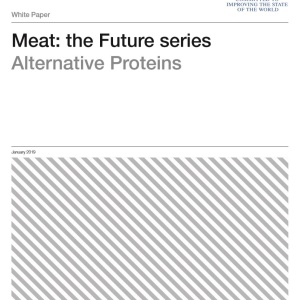
The World Economic Forum and Oxford Martin School have released a white paper on alternative proteins, which examines the narratives surrounding such foods, their environmental and health impacts, and the political and regulatory factors impacting their uptake.
The alternative proteins discussed include nuts, peas, beans, jackfruit, tofu, seitan, mycoprotein, cultured (lab-grown) meat, insects and spirulina algae. These are compared to beef, pork and chicken. The paper finds that, on a calorie for calorie basis, mortality could be reduced by replacing beef consumption with any of the other food types, particularly in higher-income countries, and notes that beef has the highest emissions intensity of all of the food types studies.
The paper then analyses the narratives that influence people’s consumption of meat and its alternatives. The main narratives identified are summarised in the table below (note that these narratives reflect viewpoints rather than evidence, and do not necessarily represent the positions of the paper’s authors).

The paper also considers the implications of a shift to alternative proteins for the food industry, the livestock sector, and the feedstock industry, along with outlining the current regulatory environment for various alternative proteins.
The paper then identifies a number of significant intervention points in the food system for accelerating the adoption of alternative proteins:
- Identifying and mitigating unintended consequences, for example negative health impacts because of factors such as the high salt content of spirulina and cricket flour.
- Targeting consumers in mid-to-high income countries, including addressing and responding to concerns surrounding alternative proteins.
- Encouraging joint public-private investment.
- Changing the incentives for producers, such as supporting livestock producers in switching to higher-value but lower-volume products.
Read more here and download the white paper, Meat: the future - Alternative proteins, here (PDF link). See also the white paper Meat: the future - Time for a protein portfolio to meet tomorrow’s demand, part of the same series, and the Foodsource chapter What is a healthy sustainable eating pattern?







Post a new comment »